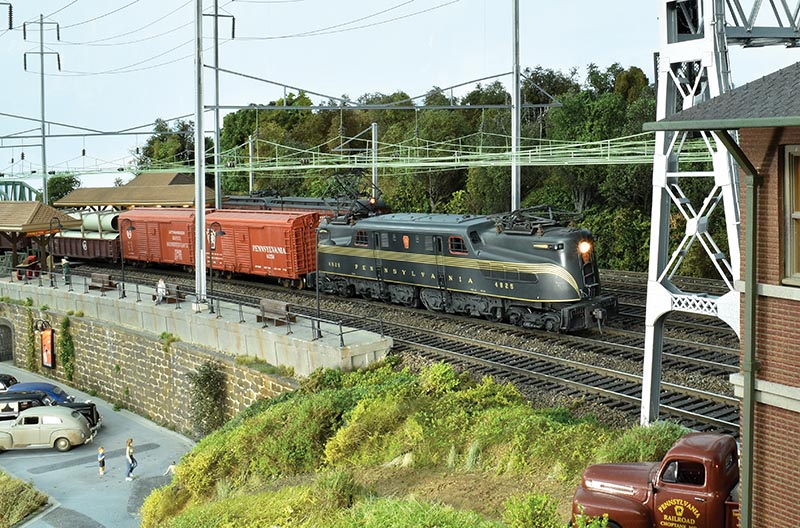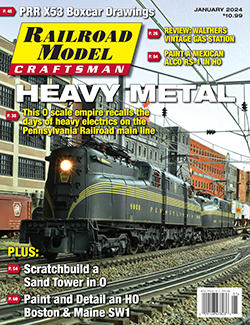 by John Sethian/photos by the author
by John Sethian/photos by the author
At the impressionable age of six years old in 1956 I saw my first Pennsylvania Railroad GG1 electric locomotive. I was on a trip with my parents from Washington, D.C., to New York, and then up to Boston on the New Haven. Up until that time the only trains I knew were pulled by 4-6-4 Hudsons or F3 Warbonnets. That GG1 was the coolest thing this six-year-old had ever seen, followed quickly by some workhorse P5a boxcabs. With that, I became hooked on this heavy-duty industrial machinery and heavy electric traction railroading in general.
My freelanced Pennsylvania Railroad Nassau Division is an O scale 2-rail layout that is inspired by — but not beholden to — the Pennsy’s electrified main line through New Jersey in 1956. Setting the railroad specifcially in 1956 allows me to run GG1s of all stripes (pun intended), O1a boxcabs, P5a boxcabs and P5a modifieds. I also run first-generation EMD F-units, Geeps, SDs, and Baldwin RF-16 “Sharks,” along with some steam engines running their last miles.
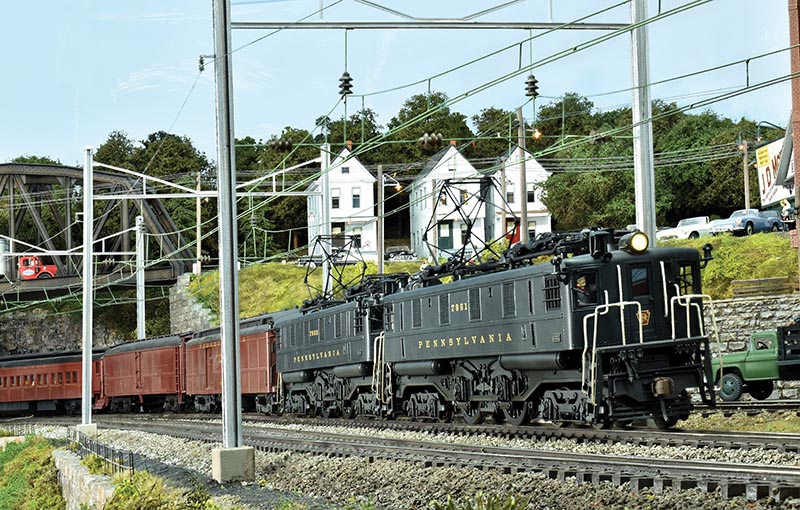
ABOVE: A pair of O1a boxcabs pulls a short train under the Whitford Bridge. The bridge is a Lionel accessory. The scratchbuilt houses are based on Edward Hopper’s 1960 painting “Second Story Sunlight.”
Why 2-Rail O Scale?
I have built layouts in HO, N, and 3-rail O. I switched to 2-rail O scale because I started running around with a group of local modelers who trace their roots back to the inpiring work of John Armstrong and Ted Stepek. When I saw what could be accomplished in 2-rail, I was hooked. The biggest appeal to me is how O scale conveys the sheer mass of real trains. An O scale GG1 weighs 11 lbs. and is two feet long. An 80 ft. passenger car weighs 2½ lbs. I could easily see the details, and I could add a lot more if I wanted.
To my surprise, I found that modeling in O Scale did not require a lot of heroics. I have a modest-size basement, and while O scale offerings are certainly not as plentiful as those in HO or N, I found I could obtain just about any locomotive or car I wanted. My rolling stock comes from several suppliers, ranging from custom brass imports to modifed 3-rail models.
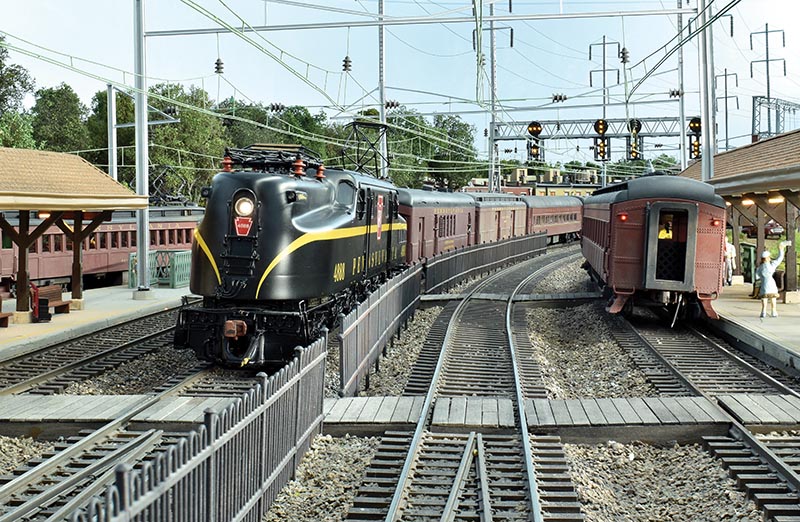
ABOVE: A commuter train has stopped at the right-hand platform at Princeton Junction, while a GG1-pulled express roars through on an express track, and an aging pair of MP54s prepares to make the two-mile run up the Princeton Branch.
Track Plan
I wanted a relaxed open design, allowing me to railfan by the side of the tracks, watching trains appear in the distance and shake the ground as they roar by. There are six principal scenes: The four-track electrified main through Princeton Junction, the “Trenton Makes, The World Takes” bridge scene over the Delaware River; an undefined East Coast city called New Lyon with the tracks exiting from a tunnel portal in the shadows of large industrial buildings; the Whitford Bridge at Exton, Pa.; and a typical Pennsy four-over-four flyover. In drawing up the plan, I sketched these scenes first and then designed the layout to accommodate them.
There is no yard or engine servicing facility, since these tend to take up a lot of space. There are also no hidden staging tracks, at least in the traditional sense. I can store four trains in sidings under the city, two more at Princeton Junction, and five more on hidden trackage in the lower level.
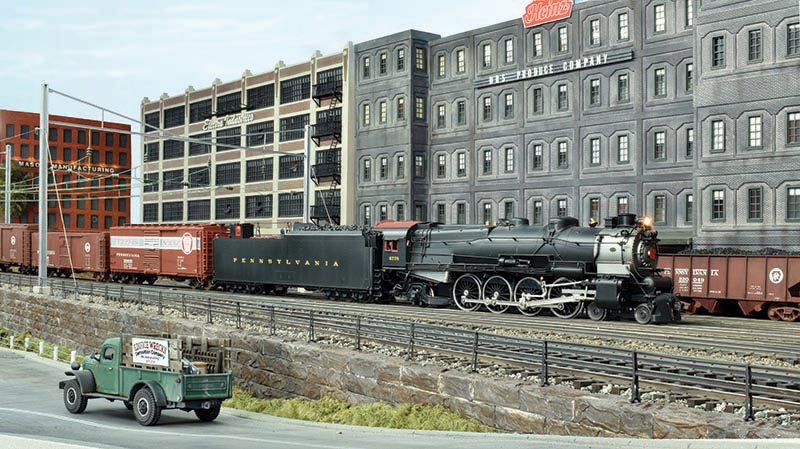
ABOVE: When you leave electrified territory you turn to good old steam. And if you are going to model the Pennsy, you need a lot of red boxcars in all shapes and sizes. A freshly shopped M1b leads a string of those boxcars under a row of warehouses. The lead boxcar is an X29b, which the PRR made by mounting a wider and taller boxcar body on to the narrower frame of an X29. The X29b was the only 40’ boxcar to sport that colorful Merchandise Service paint scheme. The model was built by kitbashing two boxcars together—just like the prototype.
There are no “operations” per se. A train comes out of one of those sidings, makes a few circuits, and returns to the siding. I can run three trains on independent loops at once. The train-watching objective not only drove the track plan, but the design of the layout itself. A single-deck layout provides ample aisle widths and lots of open space.
The fascia is at constant height and well below track grade to allow viewing and photographing over long distances without having an unrealistic layout edge in view. For the same reason, both the walls and ceiling are painted to look like the sky, and the walls are coved at the corners to eliminate shadows. I used two colors of blue paint with a lighter at the bottom fading into a darker shade at the top. I also painted hints of cloud-like formations with the lighter blue. The sky looks very good in person, but the distinction between the blue shades does not always come out in photographs…


